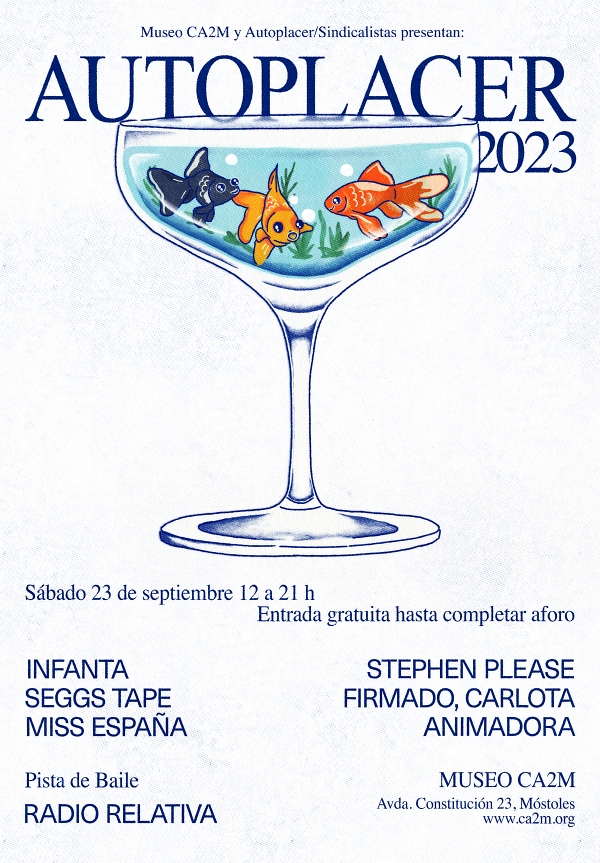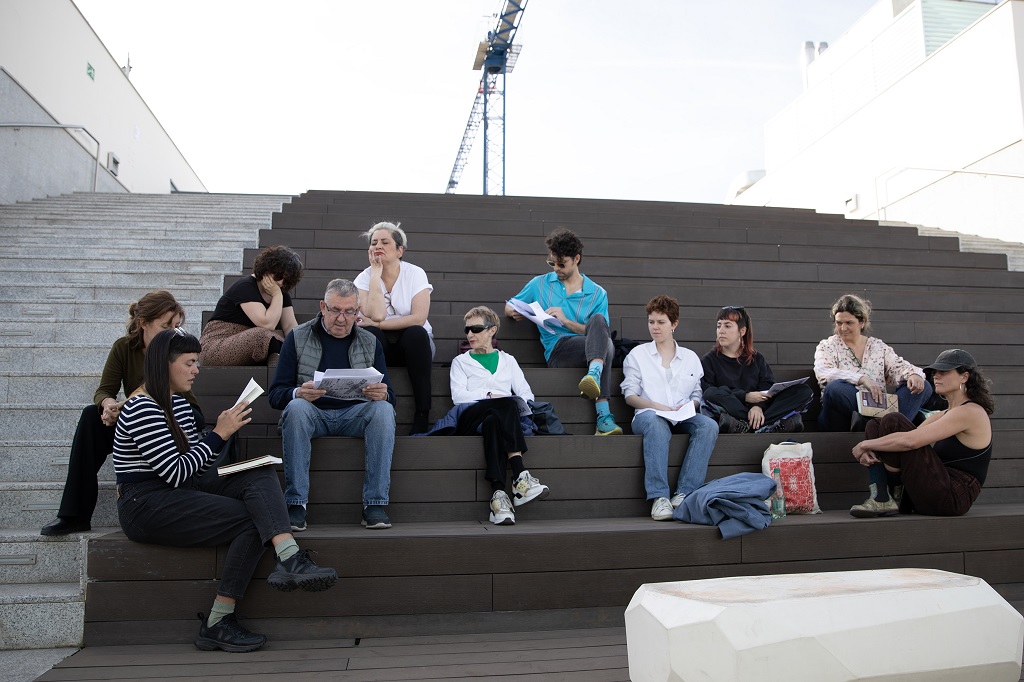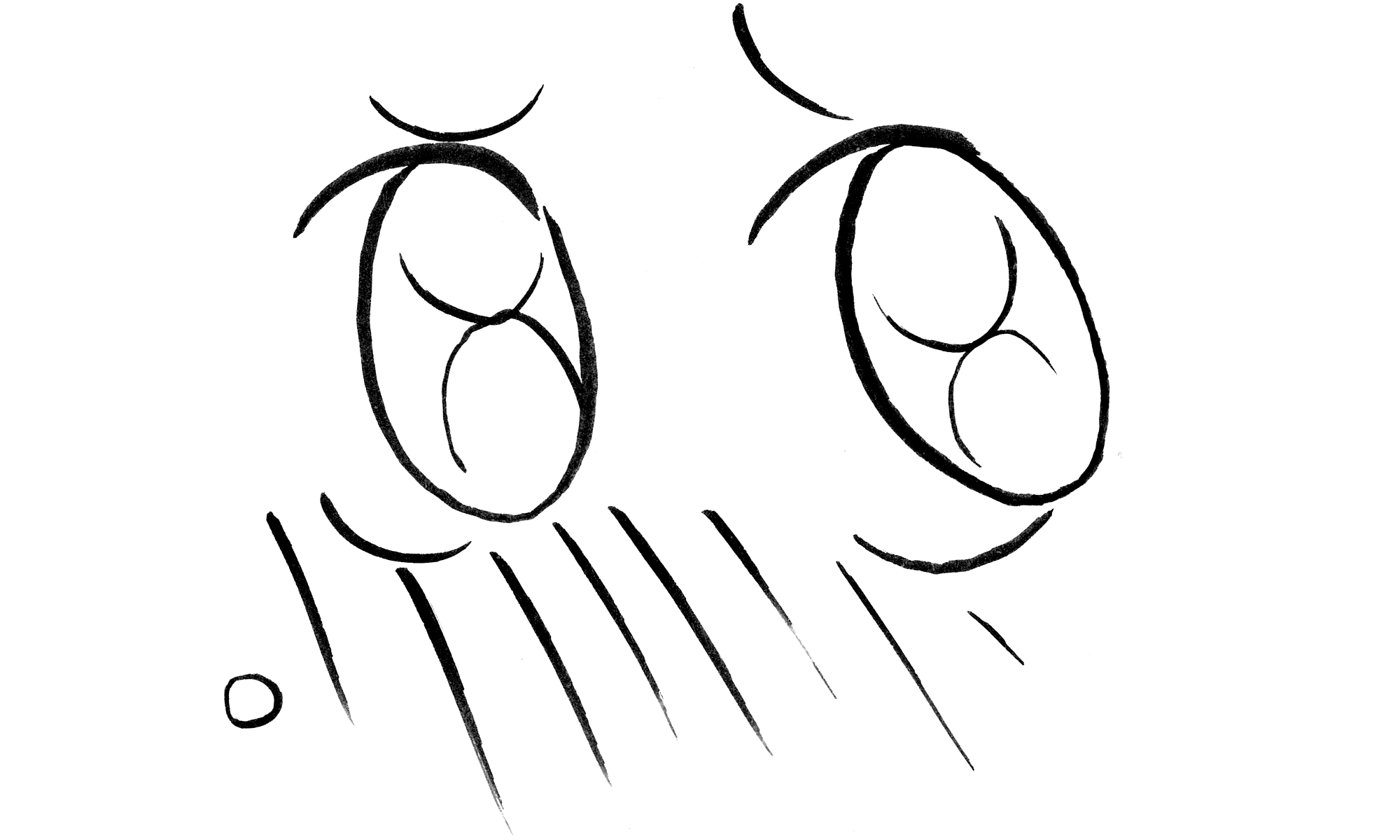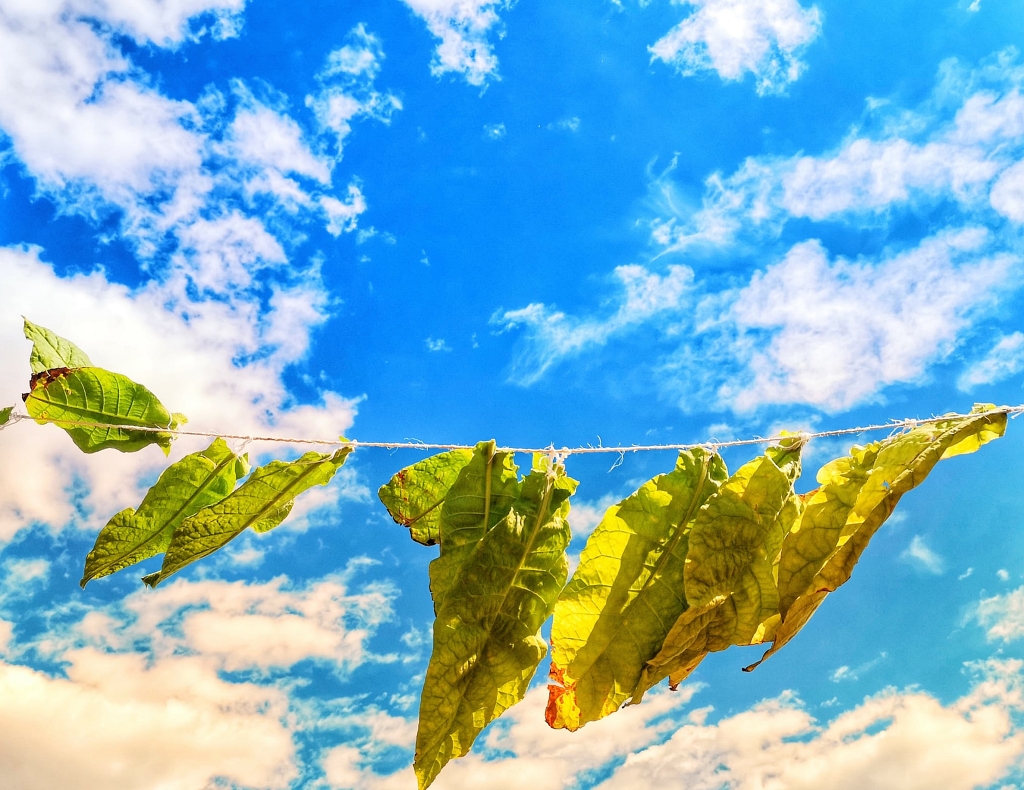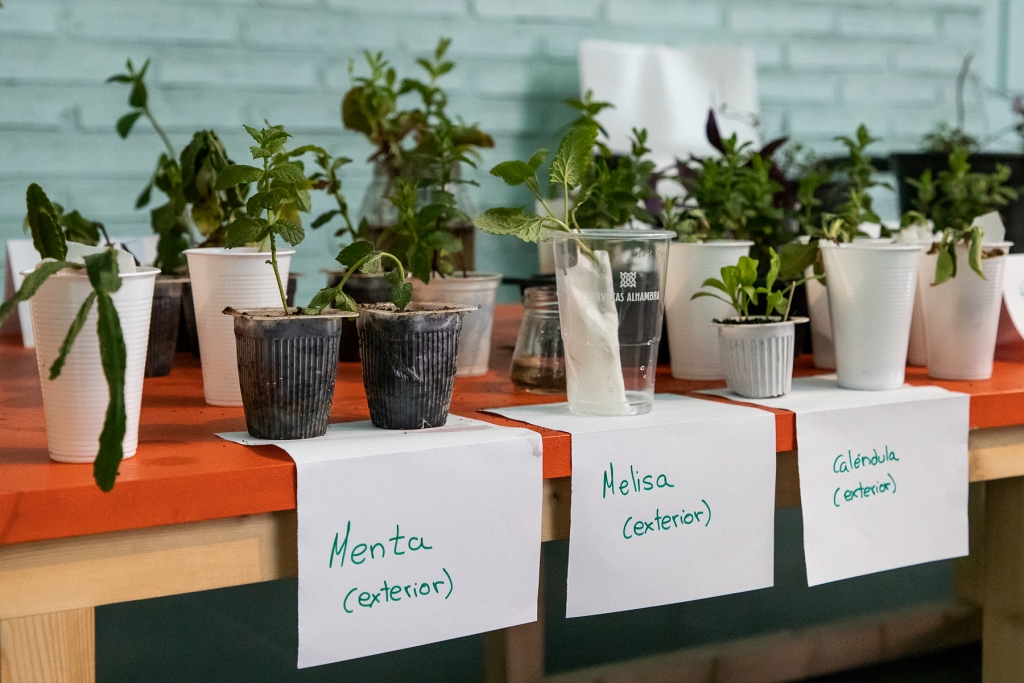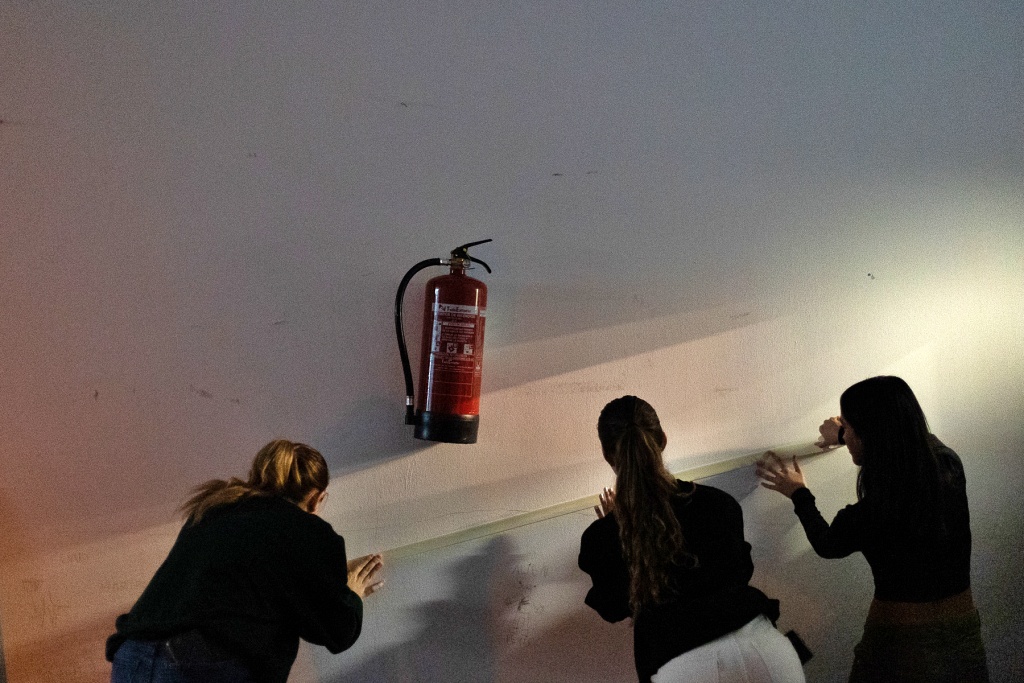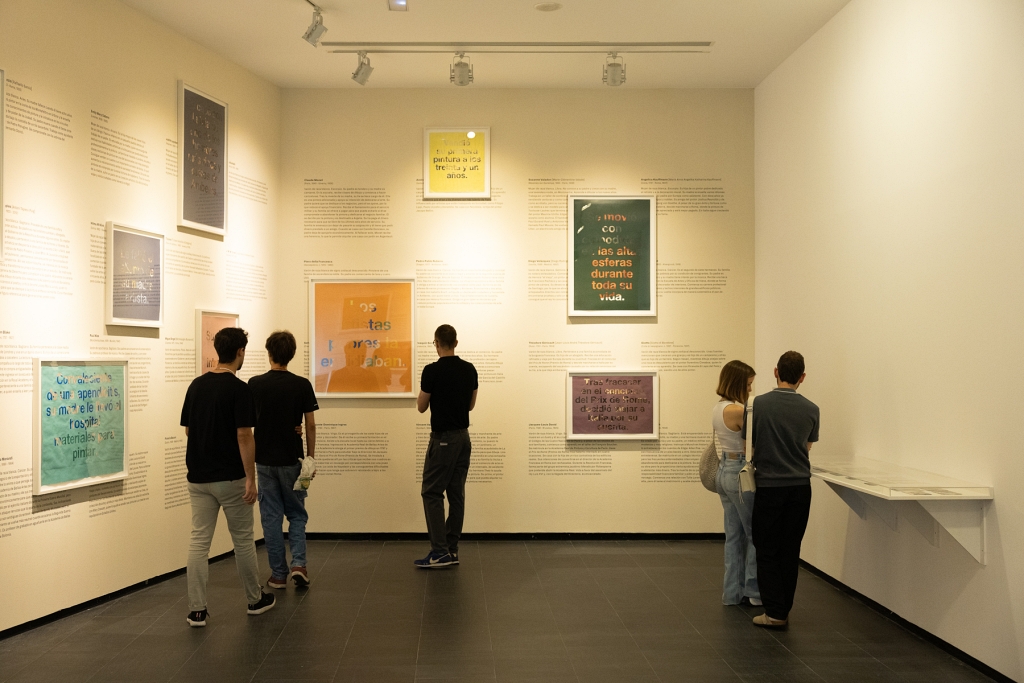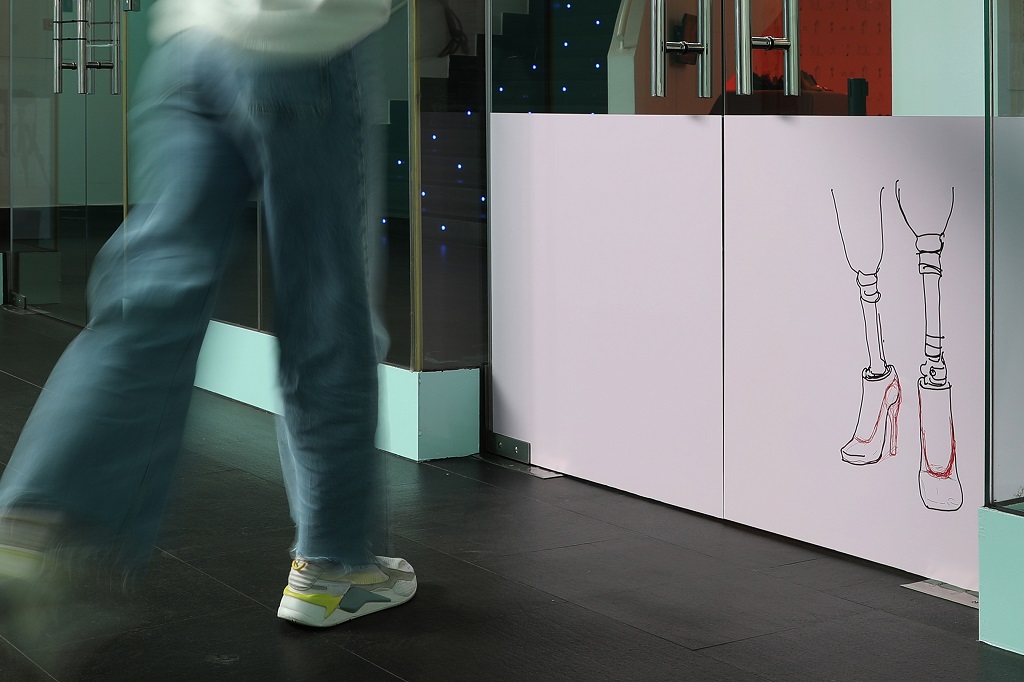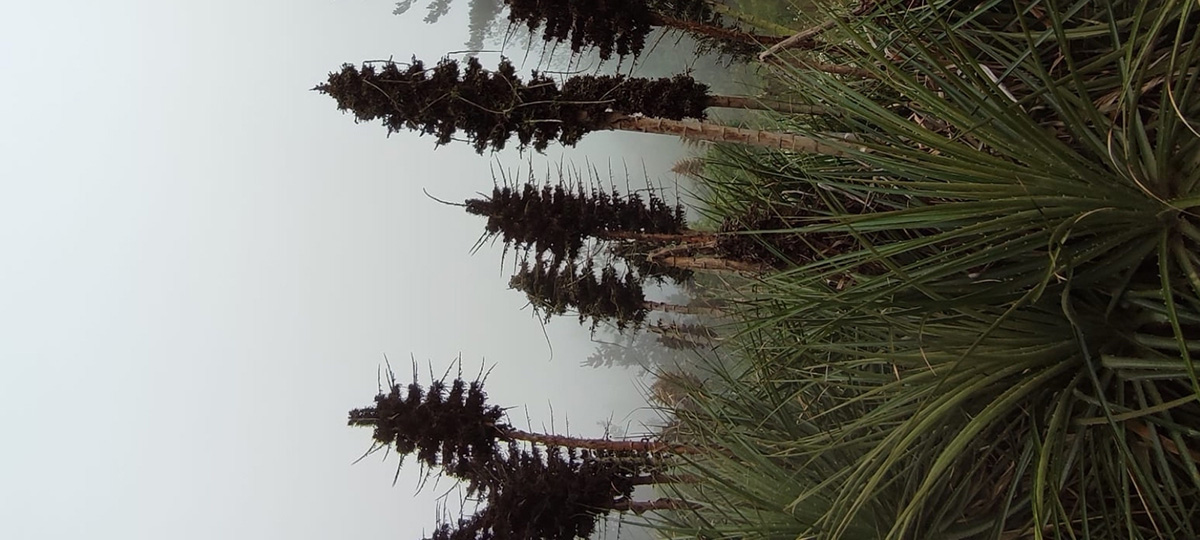Cha-cha-cha at dawn at dawn cha-cha-cha
Cha-cha-cha the backside the backside cha-cha-cha
Cha cha beach hammock idler
Idler hammock beach cha cha
Cha cha apple orange pineapple
Pineapple orange apple cha-cha-cha
Cha-cha-cha square palm trees tra-la-la
Tra-la-la palm trees square cha-cha-cha
Cha-cha-cha boats barbed wire boom-boom-boom
Boom-boom-boom barbed wire boats cha-cha-cha
Cha-cha-cha on the phone on the phone cha-cha-cha
Cha-cha cha-cha word
Word cha-cha-cha
In little more than a decade, the body has moved from the sidelines to a become a focal point of contemporary culture. For this shift to fully unfold its potential, it is necessary to pay attention to the way our materiality articulates with our surroundings. Word cha-cha-cha explores turning points in which bodies are given shape by words, and vice versa, through the paradigm of expanded language. Ambivalently, this language of blurred boundaries both produces and is the result of movement, sound, images, automatisms, feelings, economy and modes of social organisation. This programme proposes a series of performances that bear partial witness to the complexity with which these elements intertwine and affect each other.
Language no longer belongs to humans alone but, in a return to the fable of sorts, animals, objects and natural elements murmur in our ears. On the other hand, the certainty of signifiers fades when confronted with the infinite variability of models and the multiplicity of possible interpretations. In this realm where vagueness reigns, every sentence we utter is a spell, a door we open without knowing where it leads. By questioning the mechanisms for naming and their relationship with things, there is also interference with established dynamics, and possibilities emerge that are beyond the imaginable.
Through choreographies, poems, songs, whispers, shouts, rumours, spells, films without images, the clacking of castanets, familiar languages, obscure languages, unusual translations, incarnated books and newspapers, the language of birds and computers, we may temporarily lose our speech and be forced to search for words. Who knows if we will find different ways of expressing thought to, facing, before, below, fitting, with, against, about, from, since, after, during, in, between, towards, until, for, by, according to, without, under, over, behind, versus, via the silhouette of clouds, the bottom of pockets or the dregs of coffee.
Curated by Quim Pujol
Early 19th-century London witnessed the founding of The Picnic Society, an association that would meet regularly in the open air, at which time each member was expected to provide some of the entertainment and refreshments without there being a specific host. Borrowing this concept from the Picnic Society, the CA2M Museum invites a number of curators each year to design a programme for the Museum’s roof terrace.
Every Thursday from the end of May until the end of June, our roof terrace is turned into a space for hosting a programme of activities that combine body and sound with education and participation.
PROGRAMME
Thurs 25/05 I Llorenç Barber. ACTUM REENACTMENT. Javi Álvarez.
Thurs 01/06 I Juf (Leticia Ybarra + Bea Ortega Botas), Pol Jiménez, Matthieu Blond.
Thurs 08/06 I Park Keito (Kotomi Nishiwaki + Miquel Casaponsa), Joris Lacoste, Noela Covelo.
Thurs 15/06 I Paula Miralles, Josep Xortó & The Congosound.
Thurs 22/06 I Alix Eynaudi, Clara Amaral, Simon Asencio.
Thurs 29/06 I María Jerez +Élan d’Orphium, Laura Llaneli, Venecia Flúor.
TIMES: 9–11PM, EXCEPT FOR THE SESSION ON 29/06 WHICH WILL START AT 8:30PM
DOORS OPEN AT: 8:30PM. PLEASE BE ON TIME.
SELF-PUBLISHING TABLES
Thurs 25/05 I CAJA NEGRA
Thurs 01/06 I CANICHE
Thurs 08/06 I LA UÑA ROTA
Thurs 15/06 I CONTINTA ME TIENES
Thurs 22/06 I LIBROS DE ARTISTAS
Thurs 29/06 I VARAMO PRESS
ABOUT THE CURATOR
Combining the performing arts and contemporary art, Quim Pujol’s artistic practice denatures language to reveal the ideology that lies behind ordinary modes of expression and to open up other possibilities of association. The latest pieces by this iconoclastic writer and performance artist are El mensaje de otros mundos (2021) and Variedad de variedades (2022). He has participated in exhibitions at arts centres such as the Fundació Antoni Tàpies, La Capella and the EACC. Together with Ixiar Rozas, he edited the book on affect theory Ejercicios de ocupación (Ediciones Polígrafa, 2015). He curated the experimental programme of the Mercat de les Flors (2011–2015) and collaborates with the Observatorio del Placer.
Acknowledgements: Berta Gutiérrez Casaos.
PICNIC SESSIONS 2023. PALABRA CHACHACHÁ

